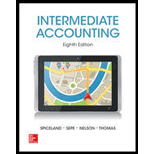
a)
Investment: The act of allocating money to buy a monetary asset, in order to generate wealth in the future is referred to as investment.
Held-to-maturity security: The debt securities which are held by the investor with intent to hold the investment till its maturity, are referred to as held-to-maturity securities.
Other-than-temporary (OTT) impairment: When the market value of an investment declines to a value lower than its cost, it is referred to as OTT impairment.
Journal: Journal is the method of recording monetary business transactions in chronological order. It records the debit and credit aspects of each transaction to abide by the double-entry system.
Rules of Debit and Credit:
Following rules are followed for debiting and crediting different accounts while they occur in business transactions:
- Debit, all increase in assets, expenses and dividends, all decrease in liabilities, revenues and stockholders’ equities.
- Credit, all increase in liabilities, revenues, and stockholders’ equities, all decrease in assets, expenses.
To Indicate: The effect of the following scenarios on the 2016 Income Statement of Company B.
b)
To Indicate: The effect of the following scenarios on the 2016 Income Statement of Company B.
Want to see the full answer?
Check out a sample textbook solution
Chapter 12 Solutions
INTERMEDIATE ACCOUNTING WITH AIR FRANCE-KLM 2013 ANNUAL REPORT
- Michiko Industries uses flexible budgets. At a normal capacity of 25,000 units, the budgeted manufacturing overhead is $75,000 variable and $300,000 fixed. If Michiko Industries had actual overhead costs of $385,500 for 27,000 units produced, what is the difference between actual and budgeted costs?arrow_forwardPlease provide the correct answer to this general accounting problem using valid calculations.arrow_forwardPlease provide the accurate answer to this general accounting problem using valid techniques.arrow_forward
- Naiya Enterprises reported the following results from last year's operations: Sales $2,250,000 Variable expenses $900,000 Contribution margin $1,350,000 Fixed expenses $850,000 Net operating income $500,000 Average operating assets $1,600,000 This year, the company has a $320,000 investment opportunity with the following cost and revenue characteristics: Sales $480.000 Contribution margin ratio 55% of sales Fixed expenses $160,000 The company's minimum required rate of return is 11%. What is the margin % related to this year's investment opportunity?arrow_forwardThe company's statement of cash flows for 2022 reported $860,000 of cash received from customers.arrow_forwardCan you solve this general accounting problem with appropriate steps and explanations?arrow_forward

 AccountingAccountingISBN:9781337272094Author:WARREN, Carl S., Reeve, James M., Duchac, Jonathan E.Publisher:Cengage Learning,
AccountingAccountingISBN:9781337272094Author:WARREN, Carl S., Reeve, James M., Duchac, Jonathan E.Publisher:Cengage Learning, Accounting Information SystemsAccountingISBN:9781337619202Author:Hall, James A.Publisher:Cengage Learning,
Accounting Information SystemsAccountingISBN:9781337619202Author:Hall, James A.Publisher:Cengage Learning, Horngren's Cost Accounting: A Managerial Emphasis...AccountingISBN:9780134475585Author:Srikant M. Datar, Madhav V. RajanPublisher:PEARSON
Horngren's Cost Accounting: A Managerial Emphasis...AccountingISBN:9780134475585Author:Srikant M. Datar, Madhav V. RajanPublisher:PEARSON Intermediate AccountingAccountingISBN:9781259722660Author:J. David Spiceland, Mark W. Nelson, Wayne M ThomasPublisher:McGraw-Hill Education
Intermediate AccountingAccountingISBN:9781259722660Author:J. David Spiceland, Mark W. Nelson, Wayne M ThomasPublisher:McGraw-Hill Education Financial and Managerial AccountingAccountingISBN:9781259726705Author:John J Wild, Ken W. Shaw, Barbara Chiappetta Fundamental Accounting PrinciplesPublisher:McGraw-Hill Education
Financial and Managerial AccountingAccountingISBN:9781259726705Author:John J Wild, Ken W. Shaw, Barbara Chiappetta Fundamental Accounting PrinciplesPublisher:McGraw-Hill Education





